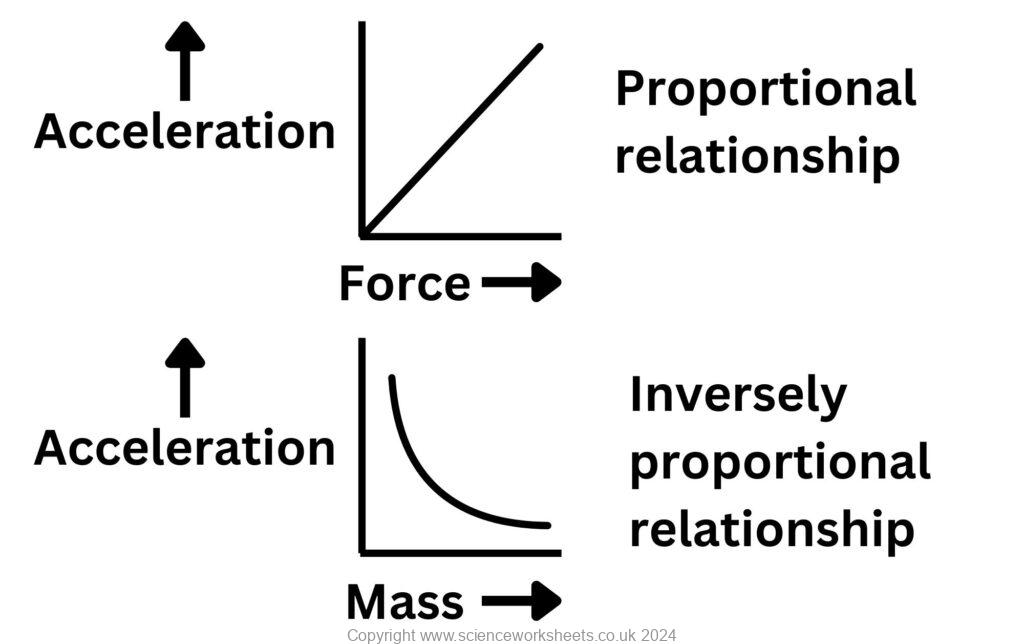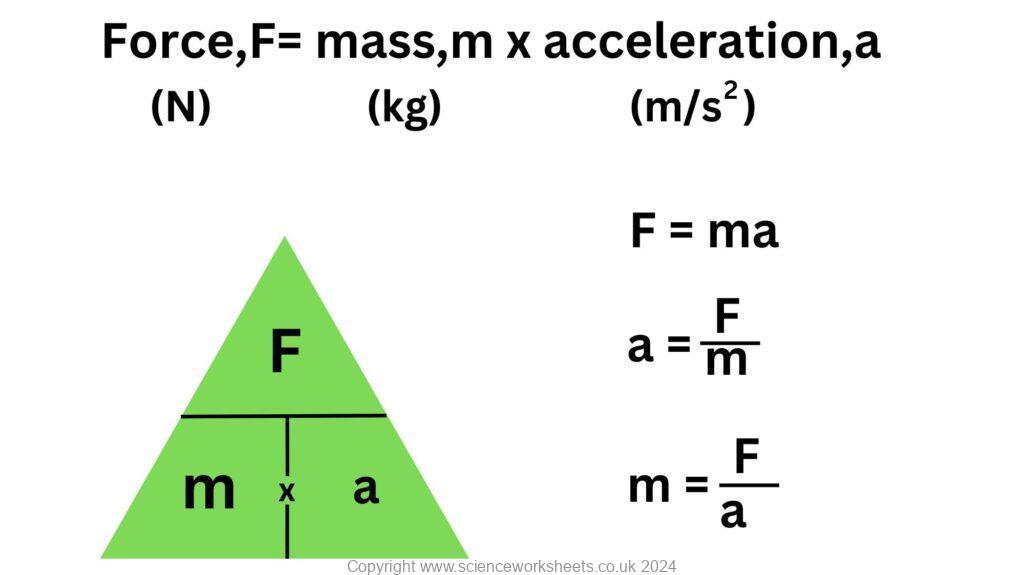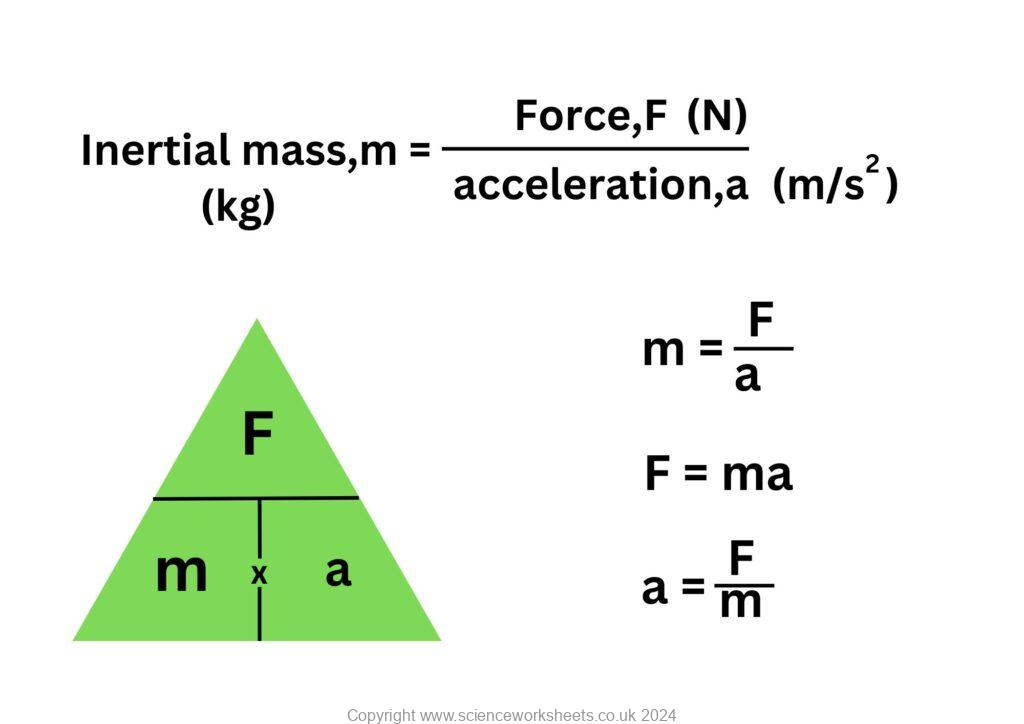AQA GCSE Newton's 2nd Law(Physics)
Newton’s 2nd Law
Newtons’s 2nd law is defined as:
The acceleration of an object is proportional to the resultant force acting on the object, and inversely proportional to the mass of the object.

The acceleration force graph shows that the the larger the force, the greater the acceleration. Remember there needs to be a resultant force on an object to make it accelerate.
The acceleration mass graph shows that as mass increases acceleration decreases, assuming that the same force is present.
The equation for Newton’s 2nd law is shown below.

1. A 50kg box is pushed across a floor and has uniform acceleration of 10m/s2. Calculate the resultant force experienced by the box.
Force = mass x acceleration
Force = 50kg x 10m/s2
Force = 500N
a = F/m
a = 8000N/1000kg
a = 8m/s2
m = F/a
m = 600/9.8
m = 61kg
Inertial mass
Inertia is the tendency of objects to continue in their state of rest or of uniform motion is called inertia.
Inertial mass is a measure of how hard it is to change the velocity of an object.
Inertial mass is defined as the ratio of force over acceleration
The formula for inertial mass is shown below

If the object has a larger inertial mass, then it will need a larger force to make the object accelerate.
Practice Question
1.What is Newton’s Second Law of Motion, and how is it expressed mathematically?
2.If the net force acting on an object doubles, what happens to the acceleration?
3a.What does it mean when an object has a constant acceleration?
3b.How is this related to the net force?
4.An object of mass 5 kg accelerates at 3 m/s². What is the force acting on the object?
5. A 20 N force is applied to a 4 kg object. What is its acceleration?
6.A force of 50N is applied to a box, causing it to accelerate at 2 m/s². What is the mass of the box?
7.If an object is moving and has an acceleration that is zero, what can you say about the resultant force on the object?
8.A cyclist and bike together have a mass of 80 kg. If the cyclist pedals with a force of 200N against an air resistance of 50N, what is the net force and resulting acceleration?
8.Explain why a heavier object requires a greater force to achieve the same acceleration as a lighter object.
9.Describe how a force vs. acceleration graph would look for a fixed mass.
10.Interpret a velocity-time graph to identify where Newton’s Second Law applies.
11.Given a graph of force vs. acceleration, determine the mass of the object.
12.What is inertial mass, and how is it defined?
13.Why is inertial mass considered a measure of an object’s resistance to acceleration?
14.Why does a heavy truck require a larger force to accelerate than a small car?
15.An object experiences a force of 30N and accelerates at 5 m/s². What is its inertial mass?
16.Two objects, one with an inertial mass of 5 kg and another with 10 kg, are subjected to the same force. Compare their accelerations.
Absorption and Emission of EM Radiation
JJ Thomson and Plum pudding model
Ernest Rutherford and the Nuclear Model
Niels Bohr changing the Nuclear Model
Discovering the Proton and Neutron
Measuring radiation from radioactivity
Radiation types and properties
Random nature of radioactive decay
Radioactive contamination or irradiation
Hazards of contamination and irradiation
Studies on the effects of radiation on humans
Different half lives of radioactive isotopes
Nuclear Fission Chain Reaction
Writing nuclear fission equations
Drawing ray diagrams for a concave lens
Drawing Ray Diagram to produce a virtual image for a convex lens
Drawing ray diagram to produce a real image for a convex lens.
Specular and Diffuse Reflection
Seeing Coloured Objects Part 2
Viewing objects through coloured filters
Transparent, Translucent and Opaque